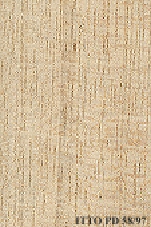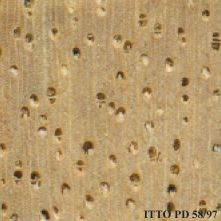
KEKABU (Bombax ceiba)
Trade Name
Kekabu
Scientific Name
Bombax ceiba L.
Family
BOMBACACEAE
Common Names
Mooc nieen (Vietnam); Ngui ban (Thailand); Kapok (Papua New Guinea); Tambaluang (Malaysia); Kapok (Malaysia); Kapok kalingi (Indonesia); Kapuk hutan (Indonesia); Wuraga; Wallaiki; Varma-druma; Tunglu; Taroktok; Sunglu; Somr; Simur; Simul; Simbal; Simalo; Shirlan; Shimlo; Shimal; Shembal; Semur; Semul; Sayar; Sawar; Sauri; Saori; Saodi; Red silk cotton tree; Randu alas; Randu; Pula; Poola; Parutti; Panheira; Panchu; Pagun; Ngiew; Mullilavu; Mai-nio; Lapaing; Khatsaweri; Khatsawar; Katu-imbul; Katseori; Kapas-damo; Kamba; Illavam; Ilavu; Ilavam; Himala; Gon run do; Edel; Didu; Del; Buruga; Buroh; Burla; Burgu; Burga; Bural; Buraga; Bouro; Bolchu; Bobor; Boboo; Bargu; Alas; Cottonwood; Fromager (France); Indian bombax; Silk cotton tree; Ngiou ban (Laos); Ngui (Thailand); Taglinan (Philippines); Babui gubat (Philippines); Gajo dor (Vietnam); Malabulak (Philippines); Bombax (Papua New Guinea); Tambaluang (Sabah); Letpan (Myanmar); Randu agung (Indonesia)
Scientific Name Synonyms
Salmalia malabarica (DC.) Schott & Endl; Gossampinus malabarica (DC.) Merr.; Bombax malabaricum DC.
Description Of The Tree
Botanical Description
It is a deciduous, small to large tree up to 35 m tall. The bole is straight, branchless for up to 20 m, up to 150 cm in diameter, with large buttresses, up to 6 m high, often fluted. The bole, or sometimes only the branches, are armed with woody knobs or
Natural Habitat
This species is found in primary and secondary forests close to the riverbanks, up to 750 m of altitude.
Wood Identification
Anatomic Description Of Wood
Wood diffuse porous. Tangential diameter of vessel lumina 200 micras or more (large). Occasionally tyloses common. Vessels per mm2 less than 6 (rare). Simple perforation plates. Intervessel pits large, 10 micras or more. Apotracheal axial parenchyma diffuse and/or diffuse in aggregates. Occasionally apotracheal axial parenchyma diffuse and/or diffuse in aggregates. Paratracheal axial parenchyma scanty and/or vasicentric. Axial parenchyma storied. Occasionally two cells per pa 4 to 10 rays per mm (medium). Larger rays more than 4 seriate. Occasionally sheath cells. Homogeneous rays and/or sub-homogeneous rays (all ray cells procumbent). Body ray cells procumbent with one row of upright and/or square marginal cells (Kribs-III). Septate fibers present. Fibers very thin walled. Fibers with simple to minutely bordered pits.
-
 Wood Macro Photo Radial Plane
Wood Macro Photo Radial Plane
-
 Wood Micro Photo Of Transversal Section
Wood Micro Photo Of Transversal Section
Availability
Cites Status
Unrestricted
General Wood Description
Color
The heartwood is straw-colored, not sharply differentiated from the white sapwood.
COLOR INDEX (1=Black, 7=Light yellow,white)
6
Grain
The grain is straight or slightly interlocked.
Texture
The texture is moderately coarse.
Natural Durability
The wood is non-durable, with an average service life of 0.9 years in a graveyard test in Peninsular Malaysia.
Natural durability index (1= Very high durability, 7=Vey low durability)
5
Resistance To Impregnation
Impregnation with preservative substances is reported to be good.
Wood Physical Properties
Basic Density or Specific Gravity (O.D. weight/vol. green) (g/cm³)
0.33
Air-dry Density (Weight and volume at 12%MC) (g/cm³)
0.35
Total shrinkage Tangential (Saturated to 0%MC) (%)
5.3
Total shrinkage Radial (Saturated to 0%MC) (%)
3.0
Dimensional stability ratio (Total Tangential Shrinkage %/Total Radial Shrinkage %)
1.8
Wood Chemical Properties
Wood Mechanical Properties
Bending Strength (MOR),12%MC (kgf/cm²)
417
Stiffness (MOE) 12%MC (kgf/cm²)
62908
Compression parallel to fiber 12%MC (kgf/cm²)
233
Compression perpendicular to fiber 12%MC (kgf/cm²)
41
Shear strength radial 12%MC (kgf/cm²)
41
Janka hardness (side) 12%MC (kgf)
177
Janka hardness (end grain) 12%MC (kgf)
189
Workability
Machining
It is easy to work in green as well as in seasoned condition.
Turning
30
Nailing
The nailing behavior of this wood is considered as fair.
REFERENCED USES
End Uses Summary
FURNITURE AND CABINETS, PLYWOOD AND VENEER, cores, TURNING, cutlery, PACKING, OTHER AND MUSICAL INSTRUMENTS, handicrafts, matches, moldings
Furniture Cabinets
- 21 - Tropical timbers of the world. Part III-Southeast Asian and Oceanian Species.
Panels, Veneers
- 25 - Directory of Timber Trade Malaysia
Cores
- 27 - Embassy of Brazil in Japan
Turning
- 30 - Embassy of Honduras in Japan
Knife Handles
- 33 - Embassy of Gabon in Japan
Packing
- 45 - Recopilación y Análisis de Estudios Tecnológicos de Maderas Peruanas
Other & Musical Instruments
- 63 - Madeiras do Brazil II
Handcraft
- 66 - Maderas latinoamericanas. VII. Caracteristicas anatomicas. propiedades fisicomecanicas, de secado, y tratabilidad de la madera juvenil de Cordia alliodora (Ruiz & Pav. Oken.)
Matches
- 71 - Proprietes physiques et mecaniques des bois tropicaux, premier supplement
Molding
- 79 - Padronização da Nomenclatura Comercial Brasileira das Madeiras Tropicais Amazônicas, Sugestão
Please Provide Information To View Producer Information